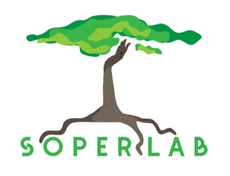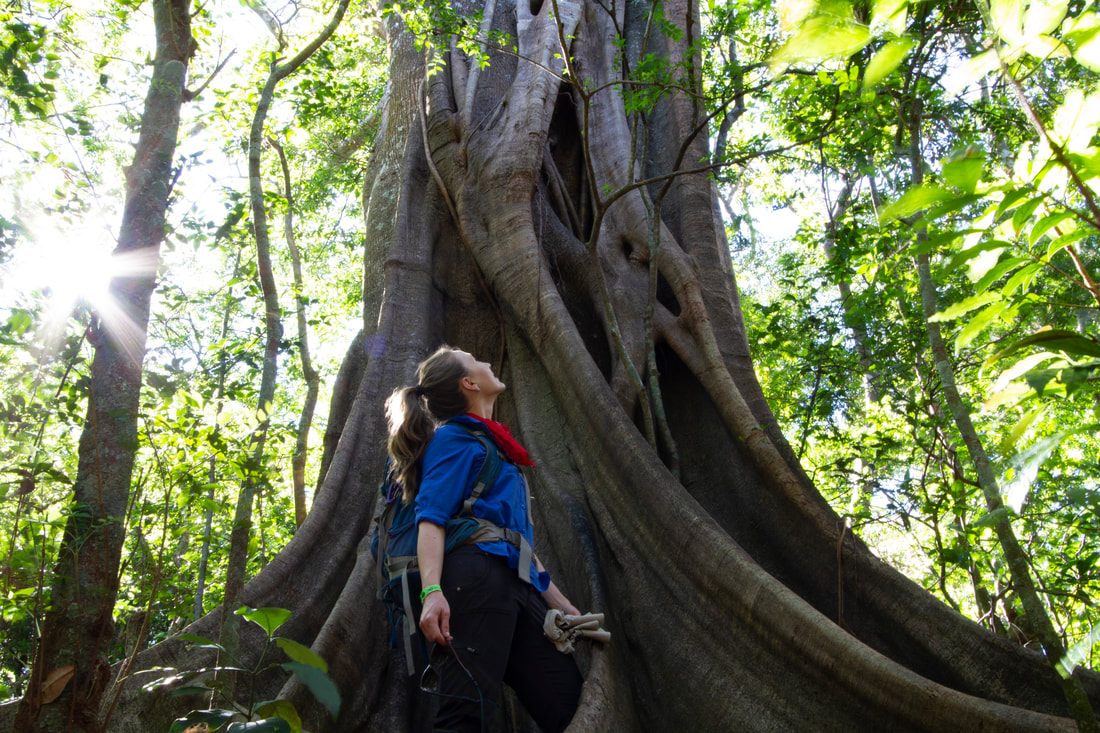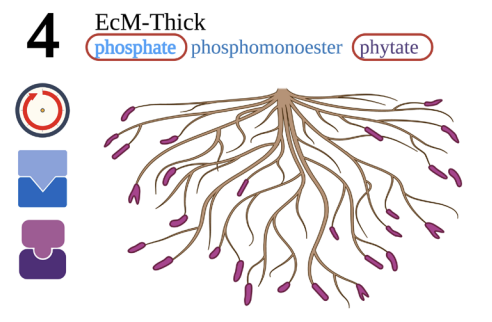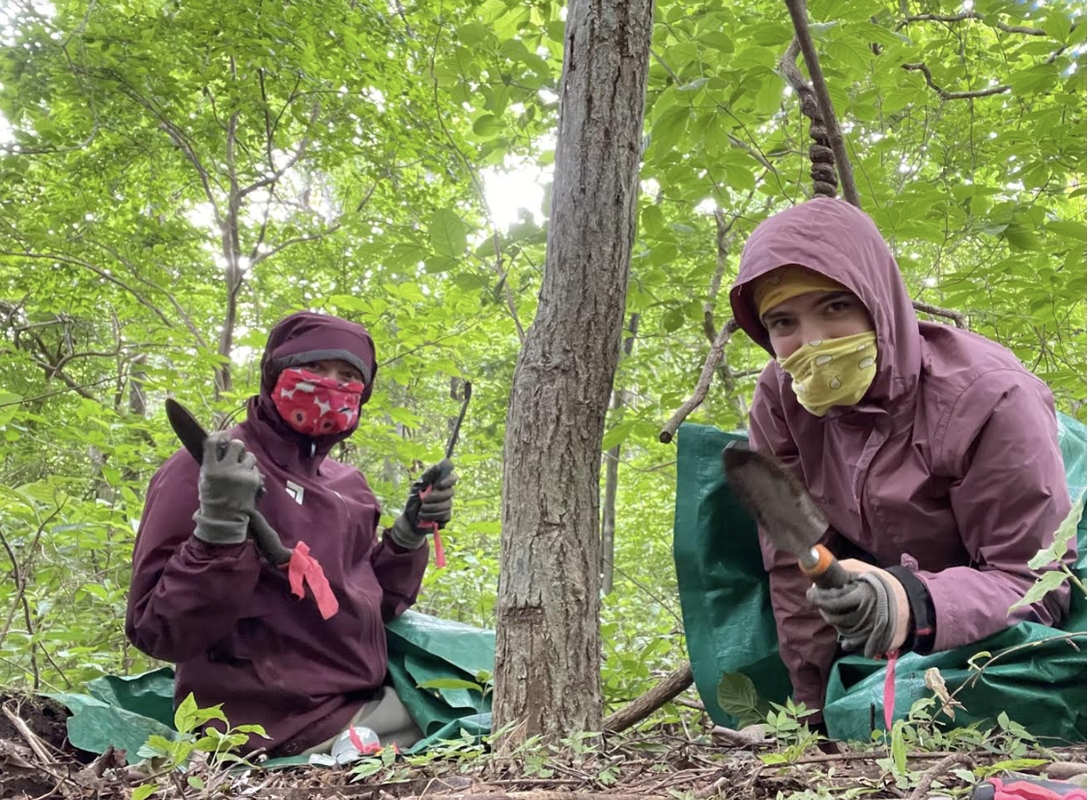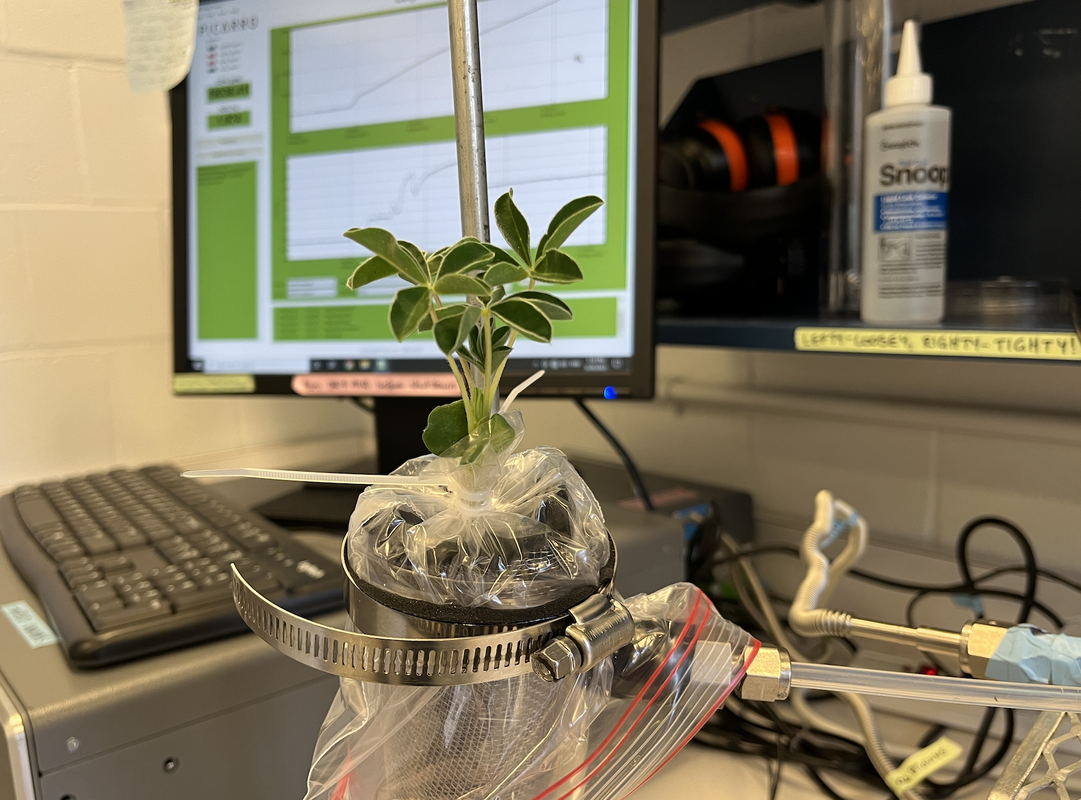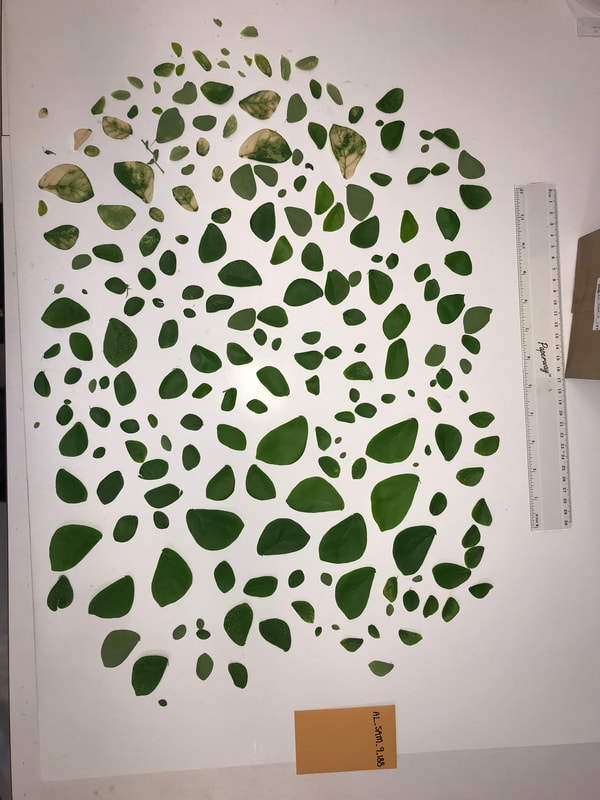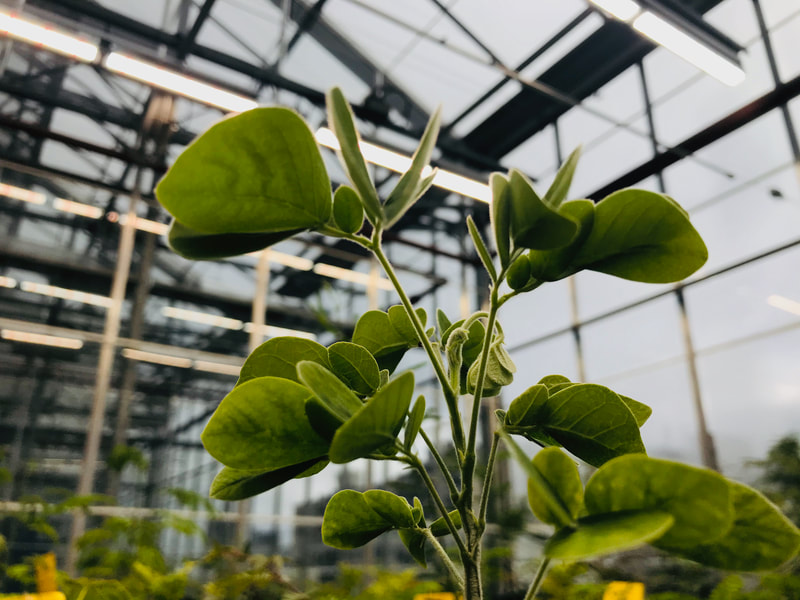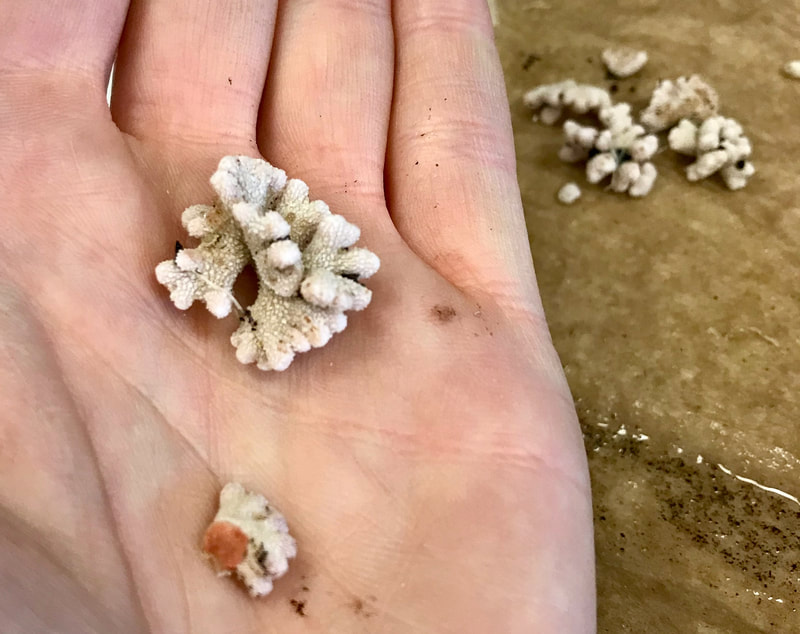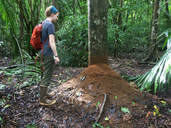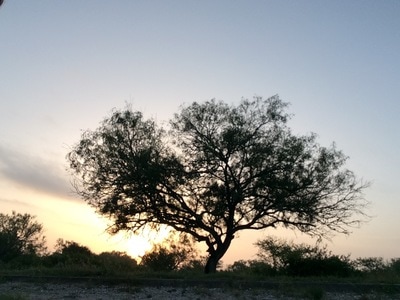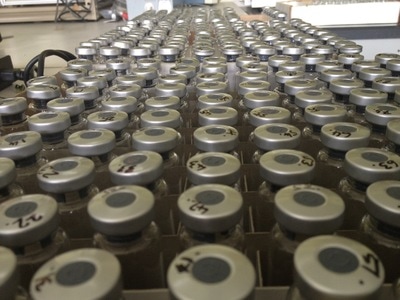Photo credit: Adriane Colburn
Though we work across scales (from individual root branches, to the globe!), the uniting theme behind our research is always nutrients. How do plants get them? What economic trade-offs determine plant nutritional strategy? How does this plant behavior influence the cycling of nutrients through their ecosystems? And how will nutrients constrain plant responses to global change?
We approach these questions using a combination of theory, field sampling, greenhouse experiments, and approaches from ecosystem ecology, biogeochemistry, and plant ecophysiology. We are especially interested in interfacing with modelers striving to represent these processes in statistical and earth system models.
Some of our current research topics include…
We approach these questions using a combination of theory, field sampling, greenhouse experiments, and approaches from ecosystem ecology, biogeochemistry, and plant ecophysiology. We are especially interested in interfacing with modelers striving to represent these processes in statistical and earth system models.
Some of our current research topics include…
|
Identifying patterns and drivers of nutritional strategies in tropical trees
Defining scales of root trait variation and root plasticity
Drivers of intraspecific variation in plant stoichiometry
Improving methods for measurement of symbiotic nitrogen fixation
Identifying blind spots in our understanding of the tropical nitrogen cycle |
We love to collaborate! Soper Lab members can be found working with:
- Tropiroot (the Tropical Root Trait Initiative) is a collaboration synthesizing pan-tropical root trait data to understand root functional ecology, represent roots in models, and forecast responses to global change.
- INCyTE (Investigating Nutrient Cycling in Tropical Ecosystems) NSF Research Coordination Network brings modelers and experimentalists together to think about how to better represent nutrient feedbacks to the global carbon cycle in earth system models.
- The USGS Powell Center Nitrogen Fixation working group synthesizes global patterns and controls on nitrogen fixation.
Previous research: Nutrient dynamics in tropical forests
Tropical forests are among the most biologically diverse and productive ecosystems on earth. One of the great outstanding questions in these systems is how remarkably large variability in tree functional and chemical traits influences biogeochemical cycling of carbon, nitrogen and phosphorus, and how these interactions might respond to global change. A few of of our findings include...
Low nitrogen losses suggest conservative ecosystem nitrogen cycling
Lowland tropical forests are often thought of as N-rich, with correspondingly high losses of biologically-available N. In southwest Costa Rica however, productive, high rainfall forests do not conform to this paradigm. Using isotopic techniques and ecosystem mass balance, we showed that gas and soluble N losses are relatively low, likely because large erosional losses constrain availability.
Lowland tropical forests are often thought of as N-rich, with correspondingly high losses of biologically-available N. In southwest Costa Rica however, productive, high rainfall forests do not conform to this paradigm. Using isotopic techniques and ecosystem mass balance, we showed that gas and soluble N losses are relatively low, likely because large erosional losses constrain availability.
Canopy foliar nitrogen drives heterogeneity in soil trace gas emissions
Remote sensing shows high variability in canopy foliar N concentrations across the landscape, leading to strong spatial variation in litter input chemistry. Our collaborators have shown that this heterogeneity affects rates of soil N cycling, and that foliar N also correlates with spatial patterns of soil microbial communities and emissions of GHG nitrous oxide. Defining relationships between remotely-sensed plant traits and soil processes offers the exciting possibility of mapping and predicting these processes at large scales.
Remote sensing shows high variability in canopy foliar N concentrations across the landscape, leading to strong spatial variation in litter input chemistry. Our collaborators have shown that this heterogeneity affects rates of soil N cycling, and that foliar N also correlates with spatial patterns of soil microbial communities and emissions of GHG nitrous oxide. Defining relationships between remotely-sensed plant traits and soil processes offers the exciting possibility of mapping and predicting these processes at large scales.
Tropical tree species show trade-offs in phosphorus acquisition strategies that aren't related to nitrogen status or functional type
Phosphorus is considered a limiting nutrient for tropical tree growth, and plants' ability to access P has major implications for tropical forest responses to climate change. Contrary to prevailing hypotheses, we found that investment in P acquisition strategies (such as root enzyme activity) is not related to their functional type (whether or not they can fix N) or to their tissue N status. Instead, plants are constrained by trade-offs between strategies that may be more related to phylogenetic history.
Phosphorus is considered a limiting nutrient for tropical tree growth, and plants' ability to access P has major implications for tropical forest responses to climate change. Contrary to prevailing hypotheses, we found that investment in P acquisition strategies (such as root enzyme activity) is not related to their functional type (whether or not they can fix N) or to their tissue N status. Instead, plants are constrained by trade-offs between strategies that may be more related to phylogenetic history.
Leaf cutters engineer N2O hotspots in tropical forests
Leaf-cutter ants are ubiquitous herbivores in tropical forests, and their foraging activities concentrate nutrients in the vicinity of their colonies. What started as a setback (a colony took over one of our field sites!) turned into an interesting new observation– ant waste piles create conditions that produce extremely high rates of nitrous oxide emissions that rival engineered human systems such as wastewater treatment plants!. This search was featured in Science and New Scientist
Leaf-cutter ants are ubiquitous herbivores in tropical forests, and their foraging activities concentrate nutrients in the vicinity of their colonies. What started as a setback (a colony took over one of our field sites!) turned into an interesting new observation– ant waste piles create conditions that produce extremely high rates of nitrous oxide emissions that rival engineered human systems such as wastewater treatment plants!. This search was featured in Science and New Scientist
Previous research: Woody encroachment
“Tree cover is one of the defining variables of landscapes, their ecological functioning, and their impact on climate"
Hirota et al (2011) Science
Hirota et al (2011) Science
|
The encroachment of trees and shrubs into natural and managed savannas and grasslands has been occurring on a substantial scale for the past 50-300 years across the globe. This significant shift in the plant community and its functional traits has implications for agricultural productivity, land use, biogeochemical cycling, habitat availability and many other processes.
Many encroaching species are nitrogen-fixing legumes. By converting potentially large quantities of atmospheric nitrogen into a bioavailable form these species can significantly affect biogeochemical cycling in the systems they invade. |
My research on encroachment of Prosopis glandulosa into the subtropical, semi-arid grasslands of south Texas explored three broad themes:
- Developing natural abundance stable isotope sampling methods to identify temporal variation in nitrogen fixation in leguminous trees
- Using soil chronosequences to identify decadal-scale patterns of nitrogen fixation during woody encroachment
- Quantifying changes in nitrogen trace gas emissions and denitrification during encroachment, and how these are modulated by climate (Also here)
